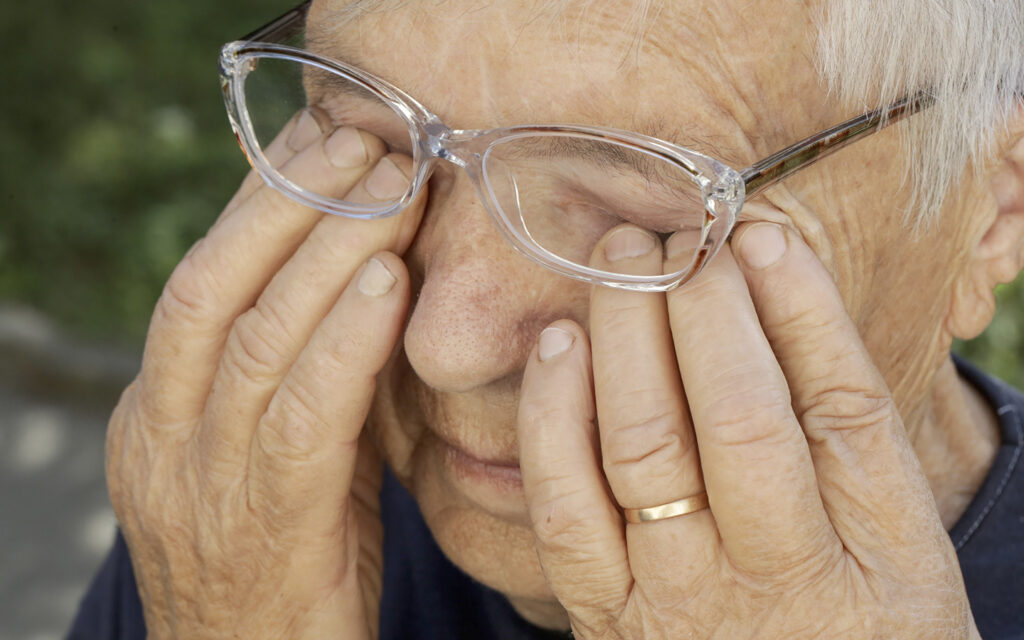How to Take Care of Your Eyes as They Age
September is Healthy Aging Month and we don’t want to miss the opportunity to share with you and raise awareness about better health practices to take care of your eyes as they age.
People falsely believe vision loss is inevitable as they age. It is true that aging does affect your eyes, but vision loss is not the norm. September is Healthy Aging Month and we don’t want to miss the opportunity to share with you and raise awareness about better health practices to take care of your eyes as they age.
Signs of Aging in the Eyes
As the time goes by and we get older, you may notice these changes in your eyes:
- Trouble reading fine print. After the age of 40 activities such as reading up-close or sewing are more challenging. The struggle to focus on objects up-close is known as Presbyopia.

- Difficulty seeing at night. You may notice that youreyes take longer to adjust and focus in the dark than they used to. Studies suggest that the eye’s rod cells, which are responsible for low light vision, weaken with age. That’s why driving becomes trickier at night or during poor weather.
- Dry eyes. Older adults tend to produce fewer tears. Leading to a condition called Dry Eye.
- Objects blending into backgrounds. Over time, is more difficult to distinguish objects from backgrounds of similar color. This is a loss of contrast sensitivity. Recommendations for low vision can help you manage this challenge.
- Glare sensitivity. Aging adults with certain eye conditions can become increasingly sensitive to glare. Good ways to lessen the discomfort are: adjust lighting around the house, cover your eyes with sunglasses and a wide-brimmed hat while outdoors, and use a matte screen filter on digital devices.

- Eye floaters and flashes of light in your vision. The vitreous, or jelly-like substance filling the middle of the eye, can thicken or shrink as we age. When this happens, tiny clumps of gel can form and cause floaters in our vision. People may also see occasional flashes of light in their vision, which is often a sign of aging. If you suddenly start seeing many more floaters or flashes of light, visit the ophthalmologist.
- Eye conditions. As we age, we are at risk of developing conditions that can affect the eye, such as cataracts, Age-related Macular Degeneration (AMD), Glaucoma or Diabetic Eye diseases. Some patients may not notice symptoms during the early stages of the disease. Getting regular eye exams is the best way to protect your eyes.
How to Protect Your Eyes — and Your Overall Health — as You Age
- Stop smoking cigarettes. Smokers are at greater risk for cardiovascular disease, stroke, AMD and other eye conditions.
- Exercise regularly. Excess weight can contribute to high blood pressure, high blood sugar and cholesterol levels, all of which can affect your health and put you at risk of developing AMD or other eye conditions. Exercise can reduce the risk.
- Eat good foods for eye health. There are foods that are good for your vision. Leafy greens (spinach, kale and collards) and cold-water fish, such as salmon, tuna and sardines, are good for healthy eyes.

- Know your family’s health history to protect your future. Identifying your risk factors is important for preventing serious eye diseases. Discuss family history, ethnicity, age, and other factors with your ophthalmologist.
- Plan to get your eyes checked more often as you age. As you age, expect to get dilated eye exams more often to make sure all is well with your eye health. The American Academy of Ophthalmology recommends all healthy adults get a baseline eye exam with an ophthalmologist by age 40. Seniors over the age of 65 should see an ophthalmologist once a year.